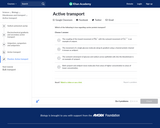
This quiz allows students to check their understanding of active transport processes.
- Subject:
- Science
- Material Type:
- Assessment
- Provider:
- Khan Academy
- Date Added:
- 03/20/2017

This quiz allows students to check their understanding of active transport processes.
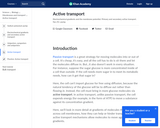
This online tutorial covers primary and secondary active transport.
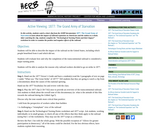
In this activity, students watch a short clip from the ASHP documentary 1877: The Grand Army of Starvationto learn about the impact of railroad expansion on Americans and the nation as a whole. After watching the clip, students complete the “Technological Turning Points and their Impact” worksheet in order to examine the positive and negative effects of the railroad.
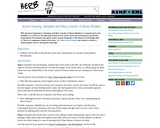
PBS American Experience’s Abraham and Mary Lincoln: A House Dividedis a 6 episode mini-series available as a 3 DVD set. The following activity focuses on the causes and consequences of Lincoln’s Emancipation Proclamation through an active viewing of Episode 4: The Dearest of All Things(Disc 2). There is a companion website to the series, The Time of the Lincolns, that contains a Teacher’s Guide, primary sources, and episode transcripts.
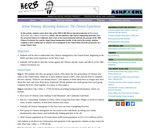
In this activity, students watch short clips of the PBS/A Bill Moyers Special production ofBecoming American: The Chinese Experience(2003). The documentary clips and accompanying materials cover the arrival of Chinese in California, their work on the transcontinental railroad, the passage of the 1882 Chinese Exclusion Act, and the Angel Island immigration facility. At the end of the activity, students complete a short writing task on whether not to immigrate to the United States from the perspective of a young Chinese man.
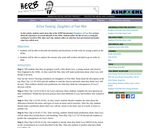
In this activity, students watch short clips of the ASHP documentary Daughters of Free Mento learn about the experiences of Lowell mill girls in the 1830s. Students follow the life of Lucy, a young girl working in Lowell in 1836. After each clip, students reflect on what they have just learned and predict what Lucy will do next.
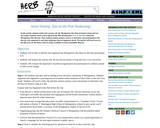
In this activity students analyze the reasons why the Montgomery Bus Boycott lasted so long and was successful. Students watch a short clip from the PBS documentary Eyes on the Prizeabout the Montgomery Bus Boycott. Then students analyze primary sources to determine who participated in the boycott, who organized it, and what challenges boycott supporters faced. The teacher will need access to the filmEyes on the Prize, which is widely available in school and public libraries.

In this activity, students watch the documentary Heaven Will Protect the Working Girlin sections, with documents and exercises designed to support and reinforce the film's key concepts: workers challenging the effects of industrial capitalism, the impact on immigrant families of young women earning money in the garment industry, and the methods used by women to improve working conditions in factories during the Progressive Era.
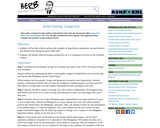
This activity is designed to help students understand key ideas from the documentary film Savage Acts: Wars, Fairs, and Empire 1898-1904. The film is divided into short segments with suggested viewing strategies and questions to keep students focused.
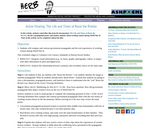
In this activity, students watch film clips from the documentary The Life and Times of Rosie the Riveter, decode a propaganda poster, and analyze statistics about working women during World War II. Parts of this activity can be completed without the film.
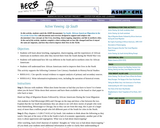
In this activity, students watch the ASHP documentary Up South: African-American Migration in the Era of the Great Warwith documents and exercises designed to support and reinforce the documentary's key concepts of Jim Crow, lynching, sharecropping, migration, and life in northern cities. At the end of the activity, students complete a short writing task on how life changed and how it stayed the same for migrants, and how they tried to improve their lives in the North.
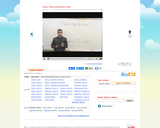
This video examines active voice and passive voice, explaining the linguistic difference between them and how to use them in sentences.

Students will identify the differences between passive and active verb forms. Students will be given the opportunity to practice recognizing these verbs. Students will be able to identify these types of verbs within their own writings, and begin to wrtie in a more complete active voice than a possive one or a mistures of both.

This resource contains activities to help students draw conclusions/make inferences. Such activities include: guess the emotion, you are what you bring, using pictures, and links to additional resources.
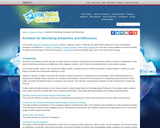
This article discusses the four forms of identifying similarities and differences: comparing, classifying, creating metaphors, and creating analogies and how these strategies can be used in an elementary classroom.
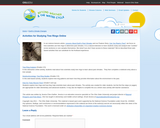
Selected resources provide three web-based activities to complement science lessons in an issue of Beyond Weather and the Water Cycle. The free, online magazine for Grades K-5 teachers explores the essential principles of climate literacy.
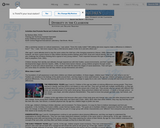
For this activity, students develop social skills and become more group-oriented by exploring the culture of their friends.

In this activity, students play a game that simulates the carbon cycle. During the activity students will compare the carbon cycle before and after the industrial revolution.

In this activity, students learn about different types of water erosion and develop strategies to slow down erosion where man is involved.
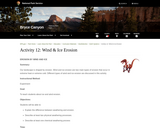
In this activity, students learn about different types of wind and ice erosion and explain the difference between weathering and erosion.